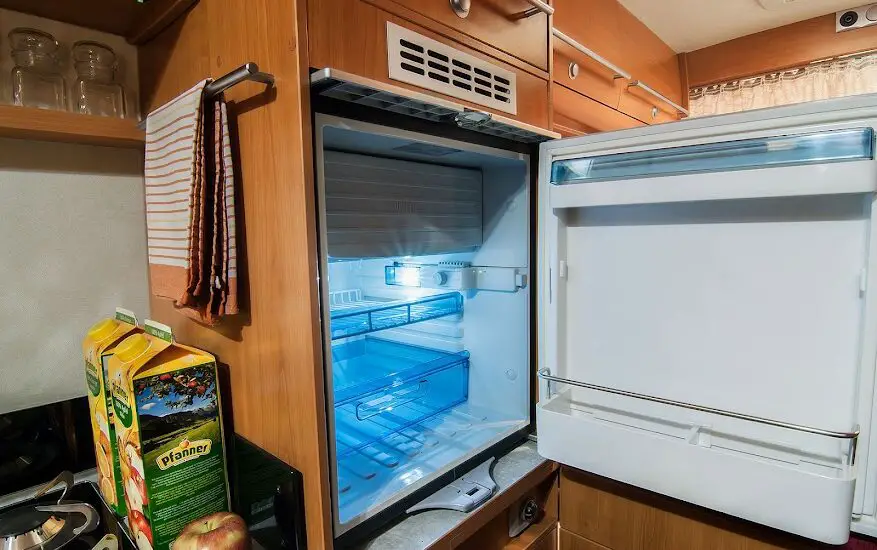Is your RV refrigerator compressor not coming on? In this comprehensive guide, we’ll walk you through the steps to identify the problem and fix it, so you can get back to enjoying your trip.

Table of Contents
Common Reasons Behind Your RV Refrigerator Compressor Not Coming On
Understanding the root causes behind your RV refrigerator compressor not coming on is the first step in resolving the issue. Here are some of the most common reasons, explained in full detail:
Power Issues: This may sound basic, but sometimes we overlook the simplest solutions. Make sure the refrigerator is plugged in properly and the outlet it’s connected to is functional. Even if it looks plugged in, a partial connection may prevent power from reaching the appliance.
Thermostat Settings: Your refrigerator has a thermostat that regulates when the compressor runs based on the internal temperature. If it’s set too high, the compressor may not activate because the fridge thinks it’s already cold enough. Ensure that your thermostat is set to a cooling mode and not accidentally set too high.
Circuit Breaker Trips: Circuit breakers are designed to trip to protect your electrical system from overload. If the breaker for the refrigerator has tripped, no electrical current will reach the appliance, preventing the compressor from starting. You’ll need to locate your RV’s electrical panel and identify the correct circuit breaker.
Faulty Compressor: Sometimes, the issue could be with the compressor itself. If it’s old or damaged, it may not function as intended. This is usually the last point of diagnosis because compressors are relatively sturdy and have a longer lifespan compared to other refrigerator parts.
Check out these other articles…
Refrigerator Compressor Just Clicks: 5 Easy Steps to Fix It
Refrigerator Compressor Just Hums: Easy Steps to Fix It
Refrigerator Compressor Keeps Clicking: 4 Simple Fixes
Refrigerator Compressor Keeps Clicking On and Off: Fixed
Refrigerator Compressor Leaking Water: Fixed in 6 Easy Steps
RV Refrigerator Compressor Not Coming On Step-by-Step Troubleshooting Guide
Once you have some idea of what might be wrong, the next step is to address each issue methodically. Here is a detailed guide:
Check the Power Supply
The first thing to do is ensure that your RV and the refrigerator are connected to a reliable power source. You can verify the outlet’s functionality by plugging another device into it. If the other device works, then you know the outlet is not the issue.
Inspect the Thermostat
Open the refrigerator and locate the thermostat. It’s usually a dial or digital panel inside the fridge. Ensure that it’s set to an appropriate temperature. If it’s set too high, the compressor won’t activate. Adjust it to a lower temperature and wait a few minutes to see if the compressor starts.
Examine Circuit Breakers
Locate your RV’s electrical panel, typically found in a utility area. Identify the circuit breaker labeled for the refrigerator and check its position. If it’s tripped to the ‘Off’ position, reset it to ‘On.’ Listen for the compressor to start. If it trips again, it’s a sign of a more serious electrical issue and you should consult a professional.
Test the Compressor
For those comfortable with using electrical testing tools, you can test the compressor with a multimeter. First, make sure to unplug the refrigerator to avoid electrical shock. Locate the compressor, usually found at the back of the unit, and remove any coverings. Disconnect the electrical connections and test for continuity using the multimeter. A faulty compressor will require replacement and this task is best performed by a professional.
You can get this KAIWEETS Digital Multimeter from Amazon if you don’t have a multimeter.